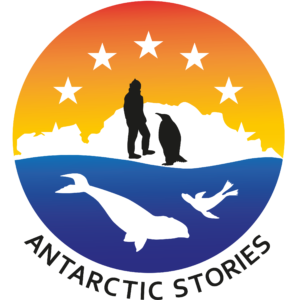Symposium sets the scene for …
Symposium sets the scene for research on frozen continent and icy seas
24 September 2022
 Australia’s leading Antarctic scientists have gathered in Canberra to showcase research and plot the path forward for science down south.
Australia’s leading Antarctic scientists have gathered in Canberra to showcase research and plot the path forward for science down south.
The 2022 Australian Antarctic Division Science Symposium was a comprehensive wrap-up of climate science, the Southern Ocean and new technology on the horizon. More ⬇⬇⬇
Where are the whales?
Finding the planet’s largest animals in the Southern Ocean is still like looking for a needle in a haystack.
AAD Marine Mammal research scientist Dr Virginia Andrews-Goff is used to tracking whales in the open ocean, sometimes from small boats.
But change is on the horizon. More ⬇⬇⬇
Protecting penguins
Renowned AAD seabird ecologist Dr Barbara Wienecke also delivered a presentation on threats to emperor penguins.
Catastrophic events in recent years such as storms and sea ice break-up have affected colonies.
“We need to understand where and how often these events occur,” Dr Wienecke said. More ⬇⬇⬇
‘There be dragons’
In the vast wilderness, having a good map is critically important.
Australian Antarctic Data Centre Manager Dr Johnathan Kool delivered his presentation on the need for modern maps using new technology.
“Many areas throughout the Australian Antarctic Territory are not well known and that’s part of what we want to do with our mapping program. We need to go out and get a better understanding of these areas,” Dr Kool said. More ⬇⬇⬇
Life under the ice
Another information gap is East Antarctica’s benthic communities – marine organisms living on the seafloor under the ice.
AAD benthic ecologist Dr Jonny Stark said most of Australia’s knowledge had been gathered from the coast near Casey and Davis research stations.
But the rest remains largely a mystery. More ⬇⬇⬇
Cold gold
This summer will see the first of the 1200 kilometre traverses from Casey research station to Little Dome C to commence drilling for an ice core at least a million years old.
It’s hoped the sample will provide answers on why the ice age cycles shifted from a regular 41,000 year cycle to an ice age every 100,000 years. More ⬇⬇⬇
Getting it right
The symposium also heard from experts in the fields of krill, fisheries management and invasive species. Prof Webster said the event was a chance for science and policy makers to come together so that they can work more closely in the years ahead.
“We’re really starting the conversation by bringing the entire Antarctic Program together for a shared purpose around agreed science priorities” Prof Webster said. More ⬇⬇⬇
⬇⬇⬇
www.antarctica.gov.au




Leave a Reply
Want to join the discussion?Feel free to contribute!